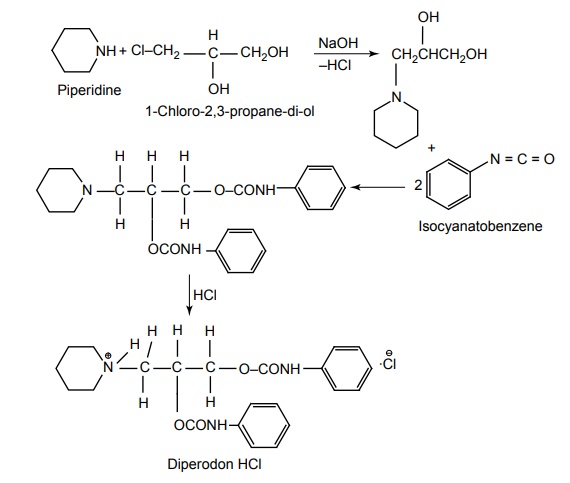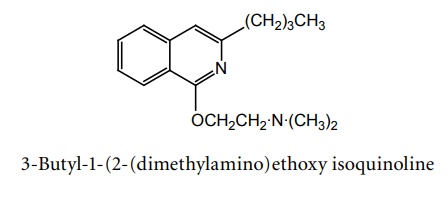Miscellaneous class
| Home | | Medicinal Chemistry |Chapter: Medicinal Chemistry : Local Anaesthetics
a. Phenacaine (Holocaine hydrochloride) b. Diperodon HCl (Diothane) c. Pramoxine HCl (Traonaolene) d. Dyclonine (Dyclone) e. Dibucaine (Nupercaine) f. Dimethisoquin (Synonym: Quinisocaine, Quotane)
Miscellaneous class Synthesis Properties and uses: It exists as small white odourless and crystalline powder. Structurally, it is related to anilides in that the aromatic ring is attached to a sp2 carbon through a nitrogen bridge. It is one of the oldest synthetic local anaesthetic. It is used mainly for producing local anaesthesia of the eye. Dose: To the conjunctiva as 1%–2% ointment or as a 1% solution. Synthesis Properties and uses: It exists as white crystals, soluble in water, and potent surface anaesthetic; used primarily for anus. Very toxic in nature. Dose: Topically, 0.5% to 1% solution, to the mucous membranes. Synthesis Properties and uses: White crystals or white crystalline powder, numbing taste, may have a slight aromatic odour. Soluble in chloroform, freely soluble in alcohol and water, very slightly soluble in ether. It is a surface anaesthetic, which possesses very low degree of toxicity and sensitization. It is applied locally as 1% solution in rectal surgery, itching, and minor burns. Structurally, it is unrelated to any of the amide type agents, simple ether linkage fulfils this function, and thus, exhibits the local anaesthetic activity. Dose: It is applied locally as 1% solution in rectal surgery, itching, and minor burns. 1-(4-Butoxy phenyl)-3-(1-piperidinyl)-1-propanone.HCl Synthesis Properties and uses: Exists as white crystals or white crystalline powder and may have a slight odour. Soluble in water, alcohol, and chloroform, insoluble in ether and hexane. Dyclonine containing lozenges are used to relieve minor sore throat and mouth discomfort. It is used to anesthetize mucous membranes of mouth, trachea, and urethra prior to various endoscopic procedures. Dose: A 5% solution is used to relieve pain associated with oral or anogenital lesion. Synthesis Properties and uses: Exists as white powder with slightly characteristic odour, somewhat hygroscopic, and darkens on exposure to light. Soluble in water, alcohol, chloroform, and in ether. Its anaesthetic activity is similar to those of procaine or cocaine when injected. It is several times more potent than procaine when injected subcutaneously and five times more toxic than cocaine, when injected intravenously. It is the most potent toxic and long-acting local anaesthetics used as infiltration, surface and spinal anaesthesia. Dose: Subarachnoid, 0.5 to 2 ml of 0.5% solution; usually, 1.5 ml of a 0.5% solution. Synthesis Uses: It is a surface anaesthetic used as an ointment or lotion for relief from irritation, itching, pain, or burning. Dose: Topically, to the skin as a 0.5% ointment or lotion 2 to 4 times/day.a. Phenacaine (Holocaine hydrochloride)


b. Diperodon HCl (Diothane)


c. Pramoxine HCl (Traonaolene)


d. Dyclonine (Dyclone)


e. Dibucaine (Nupercaine)


f. Dimethisoquin (Synonym: Quinisocaine, Quotane)


